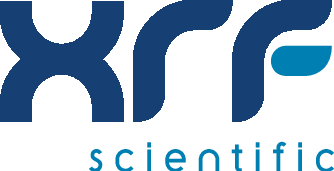Implementing Efficient Crushing and Pulverising Protocols for XRF Labs
Even the most advanced XRF spectrometer cannot compensate for poorly prepared samples, making it essential that XRF labs standardize their crushing and pulverising workflows. Crushing and pulverising are critical stages in XRF analysis where raw materials are converted into fine powders ready for precise and reproducible measurement. If these steps are inconsistent, the data will reflect preparation errors rather than the true composition of a sample. Implementing an efficient crushing and pulverising protocol can ensure XRF labs are able to minimize errors, control contamination, and maintain throughput while delivering reliable results for every analysis.
Why Crushing and Pulverising Matter in XRF Analysis
XRF analysis is an analytical technique that utilizes X-rays to determine a material’s elemental composition. Because this method relies on how X-rays interact with a sample’s surface, it is highly sensitive to particle size, homogeneity, and surface condition. Large or uneven fragments may not represent the bulk composition of the material and inhomogeneous powders can undermine repeatability and make the results of XRF analysis less reliable.
Contamination during crushing and pulverising is another challenge for XRF labs. Any residues left in crushers or mills can introduce unwanted elements into the next sample, and wear from grinding media may contribute to unwanted signals. Over-grinding at the pulverising stage can be equally problematic, generating heat, changing oxidation states, or producing ultrafine dust that can complicate pressing or fusion.
All these risks can be minimized through efficient crushing and pulverising protocols. When procedures for crushing and pulverising are carefully designed and consistently applied, they produce powders that truly reflect the sample, with a uniform texture and no contamination, helping XRF analysis to achieve the consistency required for accurate and reproducible data.
Implementing a Crushing Protocol for XRF Labs
The first stage of XRF sample preparation is coarse size reduction, where crushing turns bulk material into fragments of 2-12 mm, suitable for precise pulverisation.
XRF labs can implement a robust crushing protocol through:
- Standardizing crusher settings like gap width, feed rate, and number of passes to ensure reproducibility.
- Limiting dwell time in the crusher to prevent heat generation or mechanical alteration.
- Cleaning the crusher thoroughly after each sample with brushes, compressed air, or a dummy flush to remove residues.
- Recording all parameters in a Standard Operating Procedure (SOP) so that sample preparation methods remain consistent across operators.
- Monitoring the wear of crusher parts such as jaws and liners, and rotating or replacing them before they pose a contamination risk.
These measures ensure that every sample passing through crushing and into the pulveriser has been prepared under controlled and repeatable conditions.
Implementing a Pulverising Protocol for XRF Labs
Once crushed, the sample must be pulverised to produce the fine, homogeneous powder needed for accurate measurement in XRF analysis. Most protocols aim for particle sizes below 75 µm, but finer particle size targets are often recommended to analyze light elements such as sodium, magnesium, or aluminium.
XRF labs can implement a robust crushing protocol through:
- Selecting the right pulverising mill for the application. Vibratory disc mills offer fast, uniform grinding and planetary or ring and bowl mills are often used for harder or specialist materials.
- Controlling operating parameters like grinding time, rotational speed, jar load, and cycle design, since reproducibility depends on maintaining these values consistently.
- Using segmented cycles with auto-reverse during pulverising to reduce heating and improve uniformity.
- Matching jar and media materials to analytes of interest. For instance, avoid tungsten carbide if tungsten or cobalt are being measured. Instead, consider alternatives like zirconia, hardened steel, or agate.
- Verifying the results of pulverising by sieving or replicating measurements to confirm that powders consistently meet the required fineness.
Together, such steps form an effective pulverising protocol. With carefully set and validated parameters, it generates powders that reduce particle size effects and enhance precision in XRF analysis.
Contamination Control in XRF Sample Preparation
Efficient crushing and pulverising protocols must also include measures to prevent contamination as even trace carryover from crushers, pulverising mills, or grinding media can distort results in XRF labs.
Maintaining contamination-free conditions necessitates:
- Cleaning crushing and pulverising equipment between sample runs using methods like brushing, compressed air, or ultrasonic baths.
- Applying blanks or flush samples to confirm that no residues remain in crushers or pulverising mills.
- Tracking the wear of grinding jars and media and replacing them before they contribute significant background signals.
- Protecting samples from environmental contamination by using sealed containers, dust extraction, and clean handling tools.
XRF labs can use these protocols to minimize preparation artefacts and feel confident that their data reflects the true composition of a sample.
Strengthen The Results of XRF Analysis With Effective Protocols
Maintaining the accuracy of XRF analysis is only possible with careful sample preparation, which is why it is so important that XRF labs must establish efficient crushing and pulverising protocols to produce precise, homogenous, and contamination-free powders ready for evaluation. We, XRF Scientific, can help put the protocols into practice with our range of crushers, pulverisers, and sample preparation equipment, supporting consistent and high-quality XRF analysis. Reach out to our team of experts today to find out which of our products would work best in the crushing and pulverising protocols in your XRF lab.




